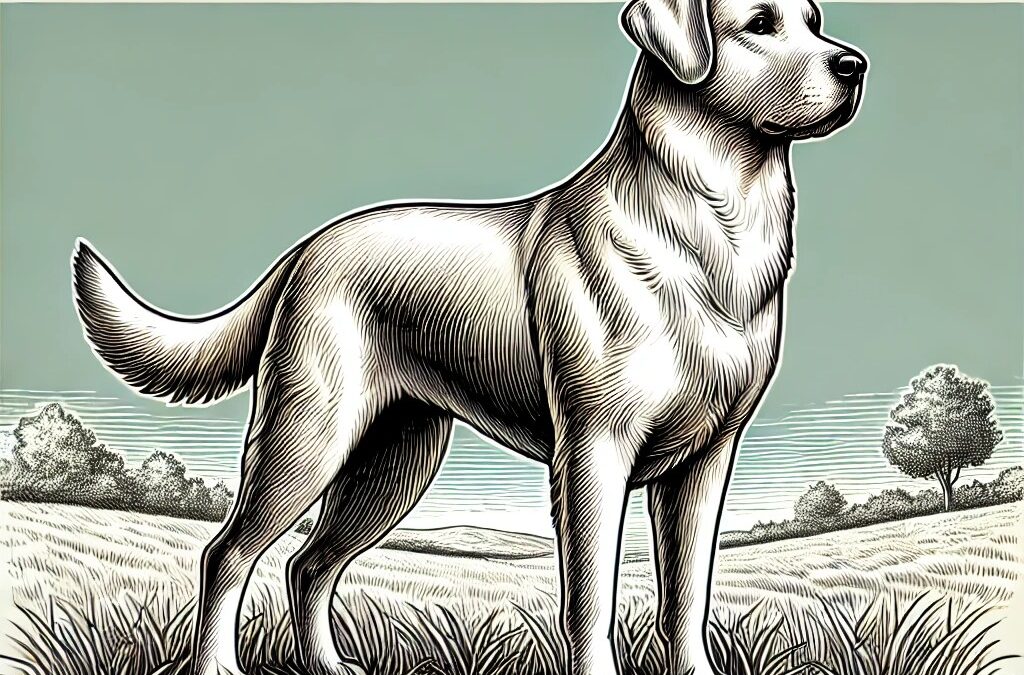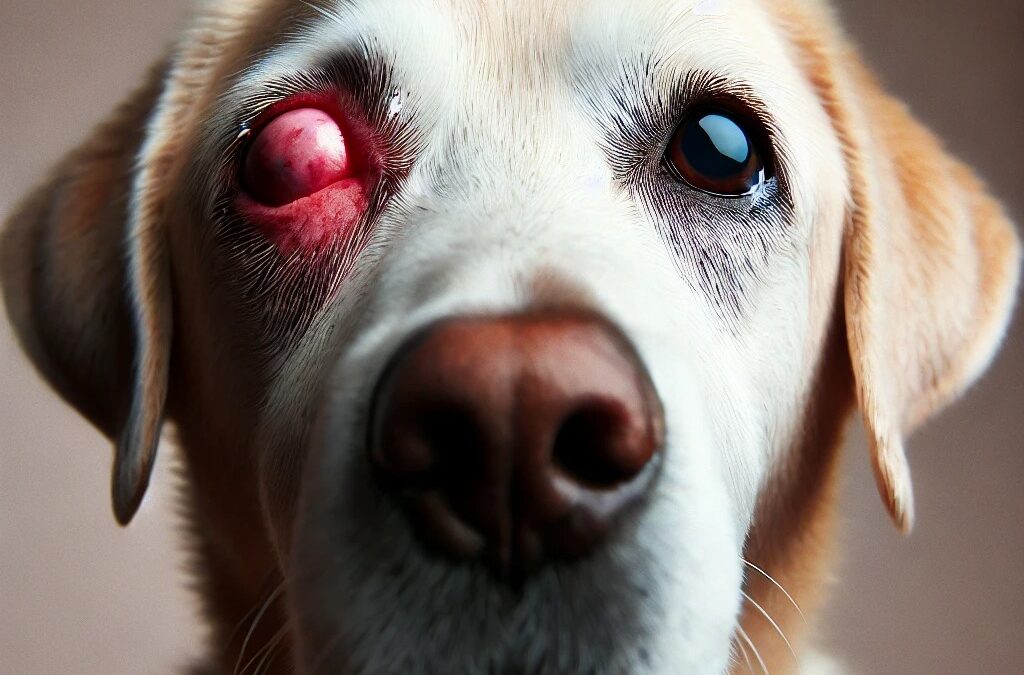
執筆者 TCMVET | 2024年7月4日 | 犬の癌と腫瘍
犬の骨がんは骨肉腫とも呼ばれ、愛犬にとって手ごわい敵です。飼い主として、この病気の影響を理解することは、特に麻痺の可能性に関しては重要です。この記事では、犬の骨がんの複雑さ、症状、治療オプション、麻痺につながる仕組みについて詳しく取り上げ、愛するペットを守りたい飼い主にとって貴重な情報を提供します。
犬の骨癌を理解する
骨肉腫は犬の骨がんの中で最も一般的なタイプで、主に大型犬や超大型犬に発症します。この悪性腫瘍は骨から発生し、痛みや腫れを引き起こし、最終的には骨自体の破壊につながります。早期発見が効果的な治療には不可欠ですが、症状は関節炎や軽度の怪我など、それほど深刻ではない病気と間違われることがよくあります。
注意すべき症状
骨肉腫の初期症状を認識することは、犬の予後に大きな違いをもたらす可能性があります。一般的な症状は次のとおりです。
- 跛行: 持続的に足を引きずったり、歩行が困難になることが、多くの場合、最初の兆候の 1 つです。
- 腫れ腫瘍の部位、典型的には手足の周囲に顕著な腫れが生じます。
- 痛み: 犬は、触られたり患肢を使ったりするときに不快感や痛みの兆候を示す場合があります。
- 倦怠感活動レベルが低下し、遊んだり運動したりすることを嫌がる。
- 減量通常の食習慣にもかかわらず、原因不明の体重減少。
骨がんと麻痺の関係
犬の骨がんの最も悲惨な合併症の 1 つは、麻痺の可能性です。腫瘍が大きくなると、神経を含む周囲の組織に圧力がかかります。がんが脊椎に広がったり、脊髄に影響したりすると、部分的または完全な麻痺につながる可能性があります。この進行は、早期発見と介入の重要性を強調しています。
診断と治療の選択肢
骨肉腫の診断には通常、身体検査、X 線検査、生検の組み合わせが含まれます。診断が確定すると、治療の選択肢には次のようなものがあります。
- 手術: 原発腫瘍を除去し、痛みを軽減するために、患肢の切断が推奨されることが多いです。
- 化学療法転移に対処し生存率を向上させるために、手術と並行して化学療法が行われることがよくあります。
- 放射線治療: これは、特に手術が不可能な場合に、痛みを管理し、腫瘍のサイズを縮小するために使用できます。
代替療法と補完療法
従来の治療法に加えて、多くのペットの飼い主は犬の健康をサポートするために代替療法を検討しています。これには次のようなものがあります。
- CBDオイル抗炎症作用と鎮痛作用があることで知られる CBD オイルは、がんの症状を管理し、生活の質を向上させるためにますます使用されています。
- ダイエットサプリメントオメガ 3 脂肪酸や抗酸化物質などのサプリメントは、全体的な健康をサポートし、免疫システムを強化します。
- 理学療法: カスタマイズされた運動と療法は、可動性と筋力を維持し、麻痺のリスクを軽減するのに役立ちます。
予防措置と定期検査
骨肉腫は必ずしも予防できるわけではありませんが、定期的な獣医の診察と健康的なライフスタイルは、早期発見と治療に重要な役割を果たします。活動的なライフスタイルを維持し、バランスの取れた食事を与え、犬の行動や体調の変化を監視することは、犬の健康を守るために不可欠なステップです。
犬の骨がんは診断が難しい病気ですが、その影響、特に麻痺の危険性を理解することで、飼い主は積極的に対策を講じることができます。早期発見と包括的な治療計画を組み合わせることで、犬の生活の質を大幅に向上させ、飼い主と一緒に過ごせる時間を延ばすことができます。常に注意を払い、情報を入手し、忠実な仲間との一瞬一瞬を大切にしてください。

執筆者 TCMVET | 2024年7月3日 | 犬の癌と腫瘍
犬の癌について考えるとき、焦点は腫瘍とその直接的な影響に向けられることが多いです。しかし、癌が犬のバランスと協調性に与える影響は、犬の生活の質に大きく影響する重要な側面です。この記事では、癌がこれらの重要な機能にどのような影響を与えるか、そしてペットの飼い主が愛犬がこれらの課題を乗り越えられるよう支援するために何ができるかについて説明します。
犬の癌とバランスの問題の関係
1. 脳腫瘍と神経学的影響
脳腫瘍は犬のバランスと協調の問題の主な原因です。これらの腫瘍は、運動とバランスを制御する機能を含む脳の正常な機能を妨げる可能性があります。症状には以下が含まれます。
- 頭を傾ける: 頭が片側に顕著に傾いている。
- 旋回まっすぐ歩くのではなく、円を描いて歩く。
- つまずいて転ぶバランスを保つのが難しく、頻繁に転倒する。
- 発作: 全体的な協調性に影響を及ぼす可能性のある制御不能な動き。
2. 内耳腫瘍
内耳はバランスを保つ上で重要な役割を果たします。この部位の腫瘍は前庭系を混乱させ、次のような症状を引き起こす可能性があります。
- めまい: 犬は方向感覚を失い、不安定に見えることがあります。
- 眼振: 急速で不随意な眼球運動。
- 協調運動能力の喪失: 正常に歩いたり立ったりすることが困難。
3. 転移性癌
がんが原発部位から体の他の部位に転移すると、バランスや協調性にも影響が出ることがあります。たとえば、脊椎に転移したがんは脊髄を圧迫し、犬の歩行能力やバランス維持能力に影響を及ぼします。
注意すべき症状
早期発見は、癌に罹患した犬のバランスと協調性の問題を管理する鍵となります。監視すべき症状には次のものがあります。
- 千鳥足よろめいたり不安定な足取りで歩くこと。
- 協調性の欠如日常的な動作を実行するのが困難。
- 移転をためらう不快感や不安定さのために身体活動を避ける。
- 頻繁な転倒: 普段よりも頻繁につまずいたり転んだりする。
- 目と頭の動き異常な眼球運動または頭の傾き。
診断と治療
適切な診断とタイムリーな介入により、がんが犬のバランスと協調性に与える影響を管理することができます。獣医によるケアには以下が含まれます。
1. 神経学的検査
包括的な神経学的検査は、バランスの問題の根本的な原因を特定するのに役立ちます。これには次のようなものが含まれます。
- 反射テスト: 四肢の反射と反応を確認します。
- 眼球運動評価: 眼振や異常な眼球運動を観察します。
- 歩行分析歩行パターンと協調性を評価する。
2. イメージング技術
MRI や CT スキャンなどの高度な画像技術により、脳、内耳、脊椎の腫瘍を検出し、影響を受けた領域の鮮明な画像を提供できます。
3. 治療の選択肢
治療法はがんの種類と場所によって異なります。選択肢には以下が含まれます。
- 手術アクセス可能で手術可能な腫瘍を除去する。
- 放射線治療腫瘍を放射線で標的とし、腫瘍を縮小させて症状を緩和します。
- 化学療法腫瘍の成長と拡散を遅らせるために薬剤を使用する。
- 支持療法症状を管理し、生活の質を改善するための医薬品。
自宅で愛犬をサポートする
犬のバランスと協調性の問題に対処するには、自宅でいくつかの調整を行う必要があります。
1. 安全な環境
家の中に犬がつまずいたり転んだりする原因となる障害物がないことを確認してください。滑り止めマットを使用し、通路から散らかったものを取り除いてください。
2. 補助器具
犬が安全に移動できるように、ハーネスやサポートスリングの使用を検討してください。
3. 軽い運動
筋力と協調性を維持するために軽い運動を奨励しますが、転倒や怪我を引き起こす可能性のある活動は避けてください。
4. 定期的な獣医の診察
定期的に獣医の診察を受けて犬の状態を監視し、必要に応じて治療を調整してください。
犬の癌は犬のバランス感覚や協調性に重大な影響を及ぼす可能性がありますが、早期発見、適切な治療、サポートケアにより、愛犬がこれらの困難を乗り越えられるようサポートすることができます。常に注意を払い、積極的に行動することで、愛犬が可能な限り最高の生活の質を維持できるようにすることができます。

執筆者 TCMVET | 2024年7月3日 | 犬の癌と腫瘍
犬のガンと血糖値の複雑な関係を理解することは、ペットの飼い主や獣医師にとって重要です。最近の研究では、血糖値の管理が犬のガンの治療と予防に重要な役割を果たす可能性があることが示唆されています。この記事では、ガンと血糖値のつながりについて詳しく調べ、犬の健康を維持するための重要な洞察と実践的な手順を紹介します。
血糖値が犬の癌に与える影響
1. 癌の増殖におけるグルコースの役割
がん細胞はブドウ糖を主なエネルギー源として利用し、急速な成長と増殖を促進します。血糖値の上昇は、がんの発生と拡大を促す環境を作り出す可能性があります。この関係を理解することで、飼い主は犬の血糖値を調節するための積極的な措置を講じることができ、がんの進行を遅らせることができます。
2. インスリン抵抗性とがんリスク
人間と同様に、犬のインスリン抵抗性は血糖値の上昇につながる可能性があります。インスリン抵抗性は、血糖値の調節を助けるホルモンであるインスリンに対する細胞の反応が低下すると発生します。この状態は糖尿病のリスクを高めるだけでなく、がん細胞が増殖するのに好ましい環境を作り出します。したがって、インスリン抵抗性の監視と管理は、犬のがん予防と治療の重要な側面です。
症状と診断
犬の血糖値の不均衡や癌の症状を認識することは、早期発見と介入に不可欠です。一般的な兆候には次のものがあります。
- 喉の渇きと排尿の増加これらは高血糖値を示している可能性があります。
- Unexplained Weight Loss: よく食べても体重が減ると糖尿病やがんの兆候となることがあります。
- 無気力: エネルギーレベルの低下は、高血糖と癌の両方の症状である可能性があります。
- 頻繁な感染: 高血糖は免疫系を弱め、犬が感染症にかかりやすくなる可能性があります。
- 目に見える腫瘍やしこり: 直ちに獣医の診察を必要とする癌の身体的兆候。
これらの症状を診断するために、獣医師は血液検査、耐糖能検査、生検を実施して根本的な問題を特定し、治療計画を立てます。
癌に罹患した犬の血糖値管理
1. 食事と栄養
単糖類が少なく、タンパク質と繊維質が豊富なバランスの取れた食事は、血糖値の調整に役立ちます。グリセミック指数が低い食品は、ゆっくりとブドウ糖を放出し、血糖値の急上昇を防ぎます。犬の食事に次の要素を取り入れることを検討してください。
- 赤身のタンパク質: 鶏肉、七面鳥、魚
- 食物繊維が豊富な野菜: インゲン、ニンジン、カボチャ
- 全粒穀物: 玄米とオート麦
獣医師に相談して、犬の特定のニーズを満たすカスタマイズされた栄養プランを作成してください。
2. 定期的な運動
身体活動は血糖値を調節し、健康的な体重を維持するのに役立ち、糖尿病と癌のリスクを軽減します。犬を定期的に散歩させたり、遊ばせたり、活動的で健康な状態を保つ活動に参加させてください。
3. 医薬品とサプリメント
場合によっては、獣医師が血糖値を管理するための薬を処方したり、代謝の健康をサポートするサプリメントを勧めたりすることがあります。これには次のようなものがあります。
- インスリン: 糖尿病と診断された犬の場合
- オメガ3脂肪酸: 全体的な健康をサポートし、炎症を軽減します
- 抗酸化物質: 酸化ストレスと戦い、免疫システムをサポートする
4. 定期的なモニタリング
犬の血糖値と全体的な健康状態を監視するには、獣医による頻繁な健康診断と血液検査が不可欠です。不均衡を早期に検出することで、治療計画を迅速に調整できます。
犬のガンと血糖値の関係を理解することで、犬の健康管理に新たな視点が生まれます。適切な食事、運動、獣医のケアを通じて血糖値のバランスを保つことで、ガンの進行を予防または遅らせるのに役立つ、より健康的な環境を作り出すことができます。愛犬が長く健康的な生活を送れるよう、積極的に情報を入手しましょう。

執筆者 TCMVET | 2024年7月3日 | 犬の癌と腫瘍
犬の癌の代替治療の分野では、磁気療法が、犬の健康と幸福を高めるための総合的なアプローチを求める飼い主にとって有望な選択肢として浮上しています。この記事では、癌に罹った犬に対する磁気療法の潜在的な利点、その仕組み、そしてペットの治療計画に磁気療法を取り入れる前に考慮すべき点について詳しく説明します。
磁気療法とは何ですか?
磁気療法は磁場療法とも呼ばれ、静磁場を利用して健康を改善する治療法です。人間の場合、痛みを和らげ、炎症を抑え、全体的な健康状態を改善するために使用されています。犬の場合も概念は同様で、体の特定の部分に磁石を当てることで症状を管理し、治癒プロセスをサポートすることができます。
磁気療法が犬に及ぼす効果
磁気療法は、血流を刺激し、組織への酸素と栄養素の供給を強化することで効果があると考えられています。血行が促進されると、がんを患う犬によく見られる炎症や痛みを軽減できます。さらに、磁石は細胞機能に影響を与え、体の自然治癒プロセスを促進する可能性があると考えられています。
癌に罹患した犬に対する磁気療法の利点
1. 痛みの緩和
がんは犬にしばしば大きな不快感を引き起こします。磁気療法は、患部への血流を増加させ、筋肉の緊張を和らげ、体内で生成される天然の鎮痛剤であるエンドルフィンの放出を促進することで、痛みを和らげるのに役立ちます。
2. 炎症の軽減
炎症は犬の癌における大きな懸念事項であり、痛みや病気の進行に寄与します。磁気療法の血行促進作用は炎症を軽減し、ペットの快適さと可動性の向上につながる可能性があります。
3. 強化された治癒力
磁気療法は、血流と酸素供給を改善することで、がんや手術、放射線治療などの治療によって損傷した組織の治癒をサポートします。これにより、回復時間が短縮され、全体的な健康状態が改善されます。
4. 非侵襲性かつ薬剤不使用
磁気療法の大きな利点の 1 つは、非侵襲性であり、医薬品を必要としないことです。そのため、従来の医薬品に耐性がない可能性のある犬に適した選択肢となります。
考慮事項と注意事項
犬に磁気療法を始める前に、獣医師に相談することが重要です。できればホリスティック療法や代替療法の経験がある獣医師に相談してください。考慮すべき点は次のとおりです。
1. 専門家による指導
獣医師は、安全性と有効性を確保するために、使用する磁石の適切な種類と強度、および治療の正しい配置と期間に関する指導を提供できます。
2. 個人の対応
すべての犬が磁気療法に同じように反応するわけではありません。最適な結果を得るには、犬の反応を観察し、必要に応じて治療を調整することが不可欠です。
3. 補完的治療
磁気療法は単独の治療法ではなく、補完的な治療法として捉えるべきです。化学療法、放射線療法、手術などの従来の癌治療と組み合わせることで、全体的な治療効果を高めることができます。
どうやって始めるのか
愛犬に磁気療法を試してみたい場合は、まずは獣医師に相談してください。獣医師は信頼できる製品を勧め、愛犬の状態やニーズに合わせた指示を与えることができます。
磁気療法は、犬の癌を管理するユニークで革新的なアプローチで、痛みの緩和、炎症の軽減、治癒の促進などのメリットをもたらします。他の治療と同様に、専門家の指導と注意深い監視が、あなたの愛するペットにとって最良の結果を確実にするために不可欠です。磁気療法を包括的な癌治療計画の一部として検討することで、犬の生活の質を向上させ、より健康な状態への道のりをサポートできます。

執筆者 TCMVET | 2024年7月3日 | 犬の癌と腫瘍
犬の健康に関して言えば、がんは体内の複数のシステムに大損害を与える恐ろしい敵です。この病気の見落とされがちな側面の 1 つは、心臓血管系に及ぼす重大な影響です。がんが犬の心臓と血管にどのような影響を与えるかを理解することは、早期発見、効果的な治療、そして全体的な健康のために不可欠です。
がんが心血管系に与える影響
1. 心臓組織への直接侵襲
血管肉腫などの特定の癌は血管から発生し、心臓に直接侵入する可能性があります。血管肉腫は一般的に脾臓、肝臓、心臓、特に右心房に影響を及ぼします。この悪性癌は、心嚢液貯留(心臓の周囲に液体が蓄積し、正常な機能を阻害する)などの重大な心血管合併症を引き起こす可能性があります。
2. 心臓や血管への転移
体の他の部位の原発性腫瘍の癌細胞は、心臓や血管に転移することがあります。転移により閉塞が生じ、血流が妨げられ、心血管系内に二次腫瘍が生じる可能性があります。その結果、心臓に負担がかかり、血液を効率的に送り出す能力が損なわれる可能性があります。
3. 腫瘍随伴症候群
腫瘍随伴症候群は、心臓血管系に重大な影響を及ぼす可能性のある、がんの間接的な影響です。これらの症候群は、腫瘍が正常な身体機能を妨げる物質を生成するときに発生します。たとえば、一部の腫瘍は過凝固を引き起こし、血栓のリスクが高まります。これらの血栓は心臓や肺に移動し、肺塞栓症などの生命を脅かす状態を引き起こす可能性があります。
注意すべき症状
犬の癌に関連する心血管疾患を検出するには注意が必要です。注意すべき症状には次のようなものがあります。
- しつこい咳これは心不全により肺に水分が溜まっていることを示している可能性があります。
- 息切れ呼吸困難または呼吸の速さは、心血管系障害の兆候である可能性があります。
- Lethargy and Weakness: エネルギーレベルの低下は、血液循環の悪化を示している可能性があります。
- 失神または倒れるこれらの重篤な症状には、直ちに獣医の診察が必要です。
- 腫れ腹部や手足に腫れがないか確認してください。腫れは体液貯留の兆候である可能性があります。
診断アプローチ
早期診断は、癌に罹患した犬の心血管合併症を管理する鍵となります。診断方法には以下のものがあります。
- 心エコー検査この超音波ベースの技術により、獣医師は心臓の構造と機能を視覚化し、腫瘍や体液の蓄積を特定することができます。
- 心電図検査(ECG): ECG は、癌性腫瘍や腫瘍随伴症候群によって引き起こされる不整脈を検出できます。
- Blood Tests包括的な血液検査により、心臓ストレスや凝固亢進のマーカーが明らかになります。
- イメージングX 線、CT スキャン、MRI では、心臓と周囲の組織の詳細な画像が提供され、異常が強調表示されます。
治療の選択肢
犬の癌関連の心血管疾患の治療は、癌の種類と進行度、および心血管疾患の重症度によって異なります。選択肢には以下のものがあります。
- 手術心臓や血管に直接侵入する腫瘍を除去すると、症状が緩和され、心臓機能が改善されます。
- 化学療法この全身治療により腫瘍が縮小し、その広がりが遅くなり、心血管への負担が軽減されます。
- 放射線治療: 標的放射線は腫瘍のサイズを縮小し、心臓への影響を軽減することができます。
- 医薬品心不全を管理し、不整脈をコントロールし、血栓を予防する薬剤は支持療法に不可欠です。
犬の癌と心臓血管系の複雑な関係を理解することは、ペットの飼い主にとっても獣医師にとっても重要です。症状を認識し、高度な診断ツールを活用し、適切な治療を行うことで、この二重の健康問題と闘う犬の生活の質を向上させることができます。愛犬が最善のケアを受けられるように、愛犬の健康管理には細心の注意を払い、積極的に取り組んでください。

執筆者 TCMVET | 2024年7月3日 | 犬の癌と腫瘍
犬のがんは、失明を含むさまざまな健康上の合併症を引き起こす可能性があります。この記事では、さまざまな種類のがんが犬の視力にどのような影響を与えるか、注意すべき症状、早期発見と治療の重要性について説明します。
がんが犬の失明を引き起こす仕組み
- 眼腫瘍: 腫瘍は眼球内に直接発生し、網膜、視神経、または視覚を司るその他の重要な構成要素などの構造に影響を及ぼすことがあります。一般的な眼球癌には、黒色腫、リンパ腫、腺癌などがあります。これらの腫瘍は眼球に重大な損傷を与え、部分的または完全な失明につながる可能性があります。症状には、眼球に目に見える腫瘤、赤み、腫れ、または眼球の色の変化などがあります。
- 脳腫瘍: 脳、特に視神経や視覚皮質に影響を与える領域にある腫瘍は、犬の視覚能力を阻害する可能性があります。視神経は視覚情報を目から脳に伝達しますが、腫瘍による圧力や損傷によりこのプロセスが損なわれる可能性があります。症状には、突然の視力喪失、行動の変化、発作、頭の傾きなどがあります。
- 転移性癌体の他の部位で発生したがんは、眼や脳に広がる(転移する)可能性があり、これらの部位の原発性腫瘍と同様の問題を引き起こします。転移性がんは急速に進行することが多いため、早期発見と介入が重要です。
- 腫瘍随伴症候群これらは、がんの間接的な影響であり、目を含む体のさまざまな部分に影響を及ぼす可能性があります。特定のがんは、免疫系の反応を引き起こし、眼組織を損傷して視力喪失を引き起こす可能性があります。
注意すべき症状
犬が癌にかかっている場合、視力障害の兆候を監視することが重要です。失明の可能性を示す症状には次のものがあります。
- 目を細めたり、片目を閉じたりする
- 過度の涙や分泌物
- 目の周りの赤みや腫れ
- 目の曇りや目に見える塊
- 物にぶつかったり、薄暗いところで動くのをためらったりするなどの行動の変化
- 突然または徐々に視力が低下する
診断と治療
犬の癌による失明を管理するには、早期発見と介入が重要です。診断方法には次のものがあります。
- 身体検査: 獣医師による徹底的な眼科検査で異常がないか確認します。
- イメージング: MRI、CTスキャン、超音波などの技術を使用して、眼や脳の腫瘍を検出します。
- 生検腫瘍のサンプルを採取してその種類を特定し、治療方針を決定します。
治療の選択肢は、がんの種類と場所によって異なります。次のようなものがあります。
- 手術: さらなる損傷を防ぎ、視力を回復させるために腫瘍を除去します。
- 放射線治療腫瘍を放射線で標的とし、腫瘍を縮小させて視力への影響を軽減します。
- 化学療法: 薬を使って癌を治療し、その進行を遅らせること。
- 緩和ケア: 進行した症例では、快適さと生活の質の維持に重点を置きます。
がんは犬の視力に重大な影響を及ぼし、部分的または完全な失明につながる可能性があります。がんと失明の関係を理解し、症状を認識し、すぐに獣医の診察を受けることが、この病気を管理する上で重要なステップです。情報を入手し、積極的に行動することで、愛犬が最善のケアを受けられるようになります。






